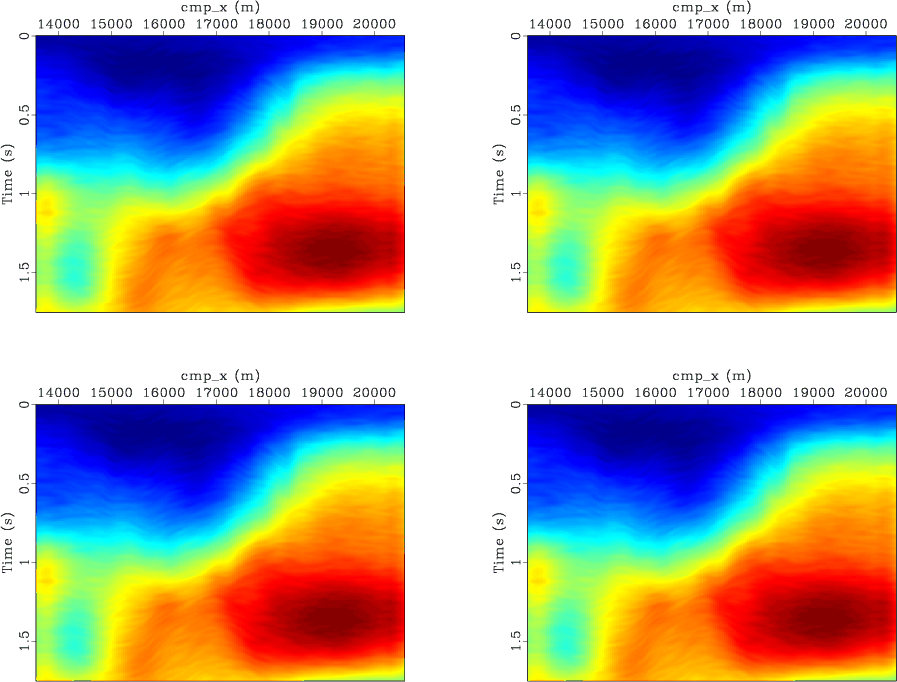|
|
|
|
Multiple realizations using standard inversion techniques |
In general the operator ![]() in fitting goals (7) is much more
complex than the simple masking operator used in the missing
data problem. One of the most attractive potential uses for a
range of equiprobable models is in velocity estimation.
As a result I decided to next test the methodology on one of the simplest
velocity estimation operators, the Dix equation (Dix, 1955).
in fitting goals (7) is much more
complex than the simple masking operator used in the missing
data problem. One of the most attractive potential uses for a
range of equiprobable models is in velocity estimation.
As a result I decided to next test the methodology on one of the simplest
velocity estimation operators, the Dix equation (Dix, 1955).
Following the methodology of Clapp et al. (1998), I
start from a CMP gather ![]() moveout corrected with velocity
moveout corrected with velocity ![]() .
A good starting guess for our RMS velocity function
is the maximum ``instantaneous stack energy'',
.
A good starting guess for our RMS velocity function
is the maximum ``instantaneous stack energy'',
 |
(9) |
Not all times have reflections so we don't weight each
![]() equivalently.
Instead we introduce
a diagonal weighting matrix,
equivalently.
Instead we introduce
a diagonal weighting matrix, ![]() ,
found from stack energy at each selected
,
found from stack energy at each selected
![]() .
.
Our data fitting goal becomes
| (10) |
| (11) |
To test the methodology I took a 2-D line from a 3-D
North Sea dataset provided by Unocal.
Figure 9 shows four different realizations
with varying levels of ![]() .
.

|
|---|
|
scale
Figure 9. Four different realization of fitting goals (12) with increasing levels of Gaussian noise in |
|
|
I then chose what I considered a reasonable variability level,
and constructed ten equiprobable models (Figure 10).
Note that the general
shapes of the models are very similar. What we see are smaller structural
changes. For example, look at the range between ![]() s and
s and ![]() s.
Generally each realization tries to put a high velocity layer in
this region, but
thickness and magnitude varies in the different realizations.
s.
Generally each realization tries to put a high velocity layer in
this region, but
thickness and magnitude varies in the different realizations.

|
|---|
|
dix-real
Figure 10. Four of the ten different realization of fitting goals (12) with constant Gaussian noise in |
|
|
|
|
|
|
Multiple realizations using standard inversion techniques |